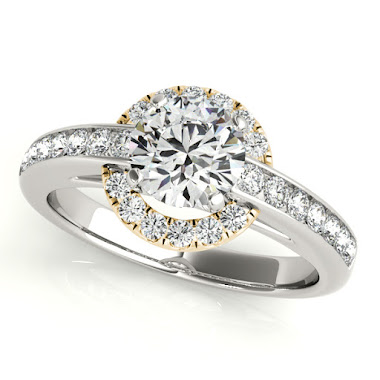How to Choose a Perfect Diamond for an Engagement Ring- A Guide
Getting hitched is one of the most exciting events in anybody’s life. It is the initial step to start a new phase of your life that must be filled with memorable, happy, and challenging moments. Therefore, many couples choose unique halo engagement rings and diamond rings to commemorate their promise due to its auspicious symbolism of the gem.
Diamonds are ageless, everlasting, stunning, and unparallel in strength. Here at EncoreDT, we understand the importance of your most important day of engagement and marriage embodied in the diamond that you choose. Thus, we have curated a list of some tips based on how to choose an engagement ring.
Tips to Choose the Right Diamond
- Cut
- Color
- Clarity
- Carat
These “4 Cs” of a diamond play an important role while choosing a diamond. The overall quality and worth of the diamond are determined by its brilliance. Each of these 4Cs affects the brilliance of the diamond.
The Diamond Cut
As we all know, the diamond has an octahedral crystalline structure. Thus, the ideal cut of a diamond is round, along with 57 facets. It will make the diamond reflect the most amount of light. The most brilliant, highest quality, and the most expensive diamonds are cut in this way.
Some jewelers cut diamonds a little off from the standard measurement to maximize the carat weight. A diamond with a “heavy make” means it was cut to retain its maximum weight, while another one with a “spread make” means a cut to be especially wide so that it looks more massive when viewed from above.
Moreover, these cuts may not help to make a diamond sparkle when cut round, but they can be just as beautiful and classy as they cut wisely. Furthermore, diamonds in these cuts are more affordable rather than brilliant-cut-diamonds.
The Color of a Diamond
It is true that the most expensive diamonds are totally colorless. Diamond is graded from D to Z. Grade D, E, and F diamonds are colorless. On the other end of the spectrum are linked up with bright colors (like pink or yellow).
A diamond’s value is not directly proportional to the color grading. Most of the heavily-saturated diamonds that are close to Z-grade are highly valuable due to its fancy color.
It might be alluring to choose diamonds of an extremely high color grade for your engagement ring, like the colorless D, E, F diamonds, or the grades G, H, I, J diamonds that are measured to be white. Conversely, you can also go with K, L, M, if you are looking for the budget diamond ring.
These grade diamonds are called “set white”. They are slightly yellow-tined, but when set in yellow gold, they appear colorless or white. It is not the best option to set these lower-grade “set-white” diamonds in silver or platinum.
Clarity of a Diamond
A scratch, recess inside or outside the gemstone, avoid small amounts of light from being reflected back to the viewer. It hampers a diamond’s clarity and its overall brilliance. The fewer inclusion means more “flawless” diamond. The more brilliant diamond is, the more expensive it will be.
These are the letter grades used to evaluate a diamond’s flawlessness:
- F- “Flawless”
- IF- “internally flawless”
- VVSI- “very very small inclusions”
- VSI- “very small inclusions”
- SI- “slightly included”
- I- “included”
- P- “piqued”
Carat Weight
The size of the stone you choose does not define its beauty and value as much you think. The diamonds of larger carat weights are most demanding and can be a source of much pride and delight. One carat is equal to 200mg of gemstone material.
It is also true that the price of the diamond per carat increases with its size and
When considering feature stones of larger carat weight, it will do you well to remember that a diamond’s price per carat increases with its size.
EncoreDT offers the best Online Engagement Rings. Visit us today to get the best ring for your better half.



Comments
Post a Comment